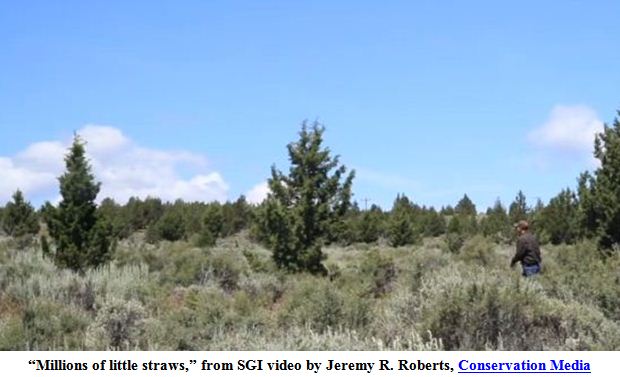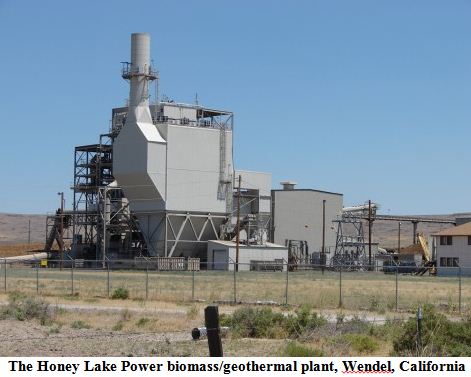Conservation Could Save Sage Grouse & Ranchers from Endangered Species Listing
By: Amos S. Eno
Posted on:09/11/2012 Updated:11/14/2014Fire suppression helped trigger a juniper invasion across the West. Now wildfires and USDA’s Sage Grouse Initiative offer win-win-win solutions.
When federal spending is being cut sharply, including cuts to conservation funds, finding win-win solutions may not be enough anymore. So with the western sage grouse and ranchers both well qualified for the endangered species list and with less money for federal conservation programs, adding another good reason to support USDA’s Sage Grouse Initiative (SGI) arrives in the nick of time.
The latest research is clear: reversing a massive juniper invasion affecting over 12 million acres of grazing lands across the West is not only restoring sage grouse habitat but it’s significantly improving profitability and sustainability for ranchers from California to Idaho. To hear about the benefits, watch a short SGI Initiative video. Oregon rancher John O’Keeffe explains in the video that the Sage Grouse Initiative “allows you to do good things for the grouse but at the same time to reclaim your ranch from this juniper invasion that’s going on.”
Oregon rancher Dennis Stanford explains in a “Juniper Tree Removal” article that removing junipers “brings up the water table for one thing. When you kill a juniper tree, you’re taking away something that’s wicking the moisture away from the sagebrush, forbs, grasses and everything else. So it’s a win-win situation. It’s more forage for the cows and better wildlife habitat for all wildlife.”

Jeremy Maestas, a USDA Natural Resources Conservation Service (NRCS) biologist, points out that “When conifers move into a sagebrush system, they act like millions of little straws across the landscape, sucking up what little moisture we get. Eventually, it dries up the springs and streams that are so critical to this desert environment. They outcompete grasses for resources and eventually it reduces the productivity and health of those plants which affects the rancher’s bottom line in terms of reduced forage availability. . . . With the Sage Grouse Initiative, we’re capitalizing on the strong link between what’s needed for sustainable ranching and for producing healthy sage grouse populations.”
Another good reason to restore western grazing lands to their natural productivity arrived this summer. Fittingly, after more than a century of wrong-headed fire suppression which triggered the juniper invasion, forest fires produced a new way to fight back.
State and federal programs to remove junipers have shown that clearing can cost from $80 to $250 per acre, depending on tree density. Now a series of California wildfires has demonstrated immediate economic payback from clearing junipers.
The 74,000-acre Chips Fire damaged PG&E power transmission lines in the Feather River Canyon, causing recurring power outages. To turn the lights back on for Susanville area residents, the local utility district switched to a nearby power source, the Honey Lake Power biomass/geothermal plant. While the fires raged, Honey Lake Power generated 30 megawatts, 100% of its capacity – generating nearly half of its electricity from juniper chips, removed as part of the Sage Grouse Initiative.

“Our office would not be open right now if it weren’t for the juniper chips,” said Ceci Dale-Cesmat, District Conservationist for USDA’s NRCS office in Susanville. Dale-Cesmat is also the conservationist who signed SGI contracts with ranchers to remove juniper trees and make other landscape improvements that help sage grouse.
“The ranchers and our partners in the Sage Grouse Initiative have been very excited about the progress we’re making with the juniper treatments,” said Dale-Cesmat. “They are improving the condition of the range for both sage grouse and livestock, but I guess I didn’t foresee the junipers becoming a source of local clean energy, providing jobs and literally keeping the lights on,” she said. “This is definitely a win-win.”
<><><><>
Feedback
re: Conservation Could Save Sage Grouse & Ranchers from Endangered Species ListingBy: Sage Grouse Initiative Communications on: 10/31/2014Thank you for sharing the great success story that is the Sage Grouse Initiative! A win-win for wildlife and working lands. Check out our other videos too- one that's an overview of SGI, another focusing on rotational grazing, and a third on conservation easements. Sage Grouse Initiative video gallery
 Sign In
Sign In
 Sign In
Sign In
